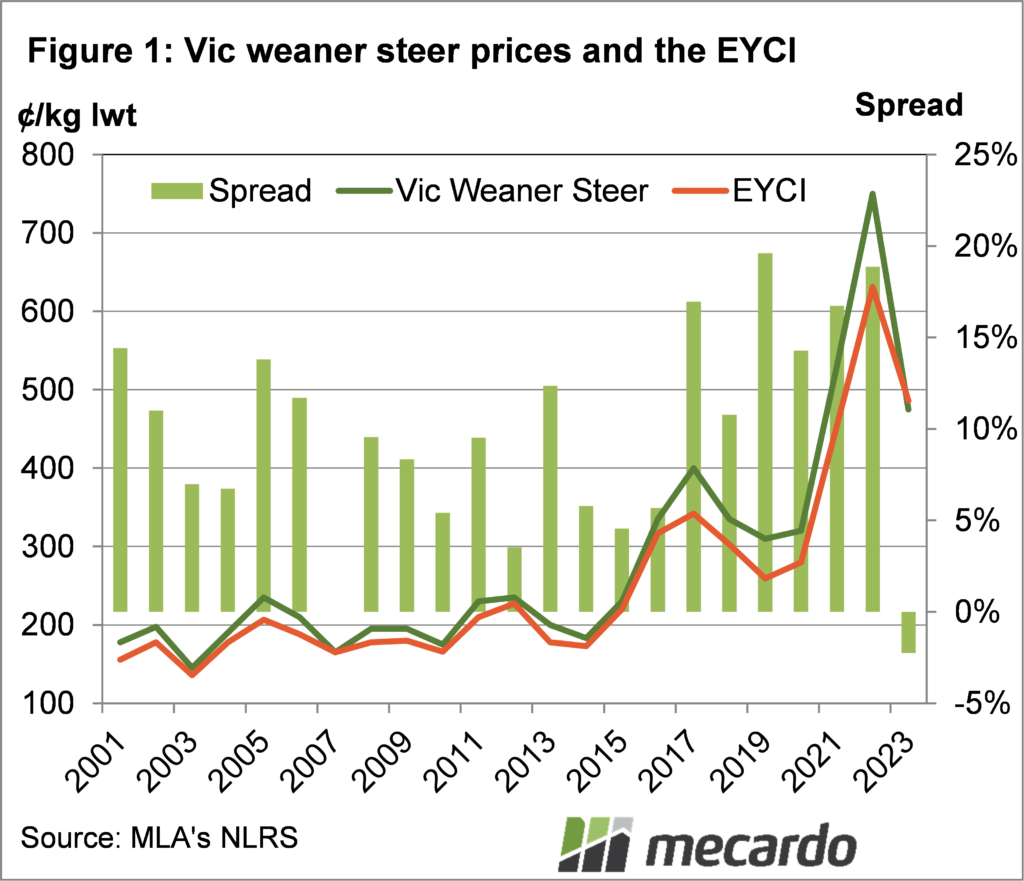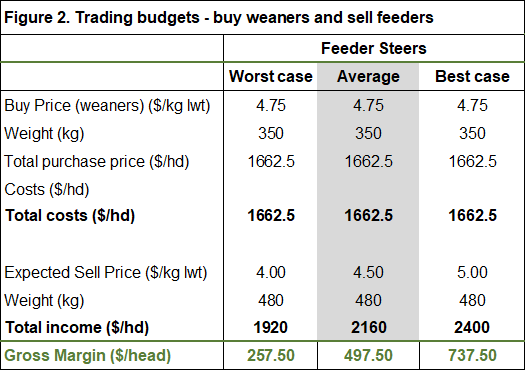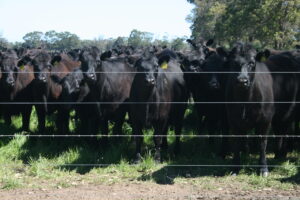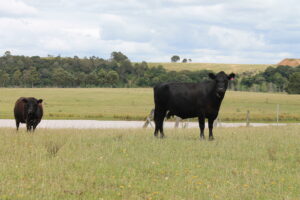It’s that time of year when cattle producers cut short their beach holidays and head home to sort up cattle for the annual southern weaner sales. After the extreme highs of 2022 the expectation was for lower values, but by some estimations weaners are looking as cheap as they’ve been for many a year.
The headline figures for weaner sales are still historically very good. At Hamilton on Monday, and at other sales last week, most Angus steers in the 275-300kg range were making 450-500¢/kg lwt. While a pretty dramatic 36% decline on last year, prices have only ever been better 2021 and 2022 (figure 1), so you could say things are still pretty good.
Absolute prices relative to historical levels are one way to measure value, but we like to look at another couple. A couple of key measures are how weaner prices compare to the market in general, and how much money might a buyer expect to make of weaners this year.
The Eastern Young Cattle Indicator (EYCI) hasn’t been published yet this year, so we’ll have to work with Decembers number of 900¢/kg cwt, or 486¢/kg lwt. Looking at a couple of prime market reports the EYCI will likely open lower this week, more in the 850¢ range, but we’ll use 900¢ for now.
Figure 1 shows the premium or discount of weaner steers to the EYCI, and this year is a huge anomaly in that it is a discount. We have to go all the way back to 2007 to find a year when the EYCI and weaners were equivalent, and we haven’t seen a discount at all in the last 22 years.
Demand for weaners appears to have taken a massive hit this year, but feeder prices are also well back, limiting competition for the heavier end.
If we look at what backgrounder can make out of weaners we see why buyers are being more cautious. Figure 2 shows that if feeder prices fall to 400¢/kg lwt, there isn’t much margin after costs in growing out 350kg steers. At 450¢, the price of late 2022 things look better, and a return to 500¢ would be a great trade.
What does it mean?
With weakening cattle markets in general, and plenty of uncertainty ahead we can see why weaner buyers might be more cautious this January. No one likes to buy on a falling market, so those who do are punting on the fact the market will find a floor and rebound before the weaners they’re buying now are ready to be sold again.
Have any questions or comments?
Key Points
- Weaner steer prices are 30-40% lower this year than in 2022.
- The sales will still be the third highest priced on record.
- The falling market in general has buyers more cautious about bidding up this year.
Click on figure to expand
Click on figure to expand
Data sources: MLA














